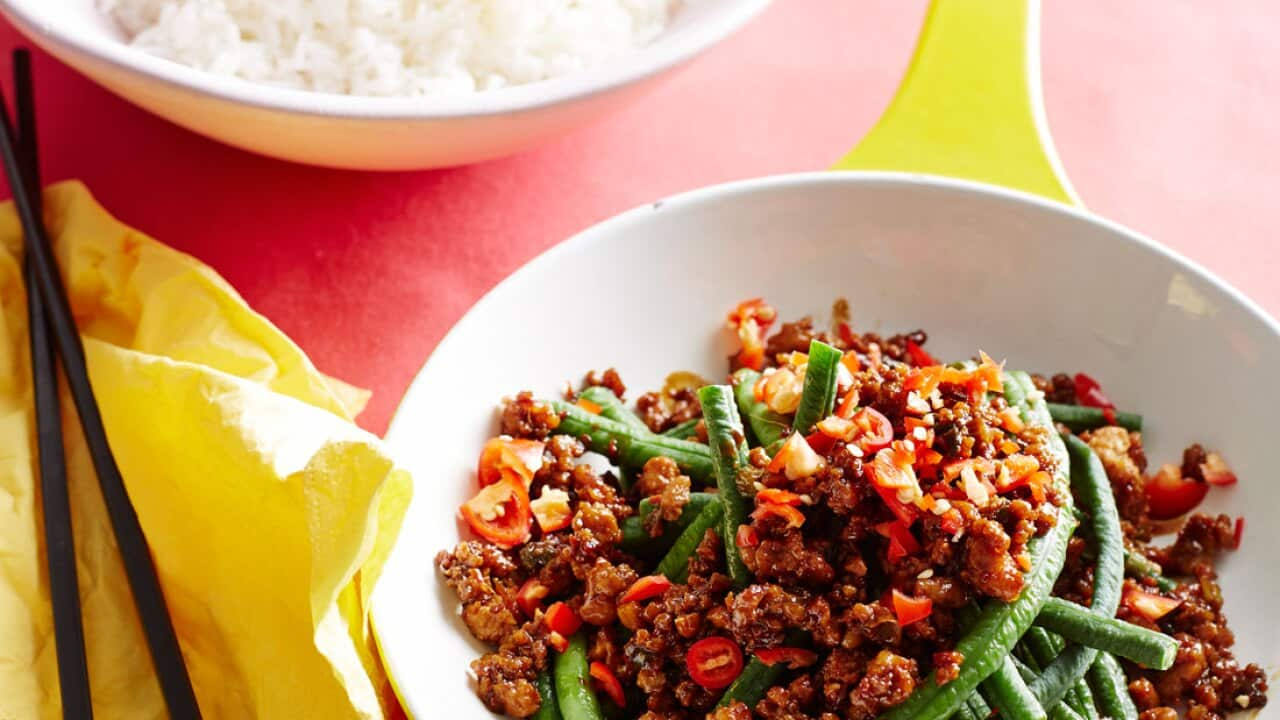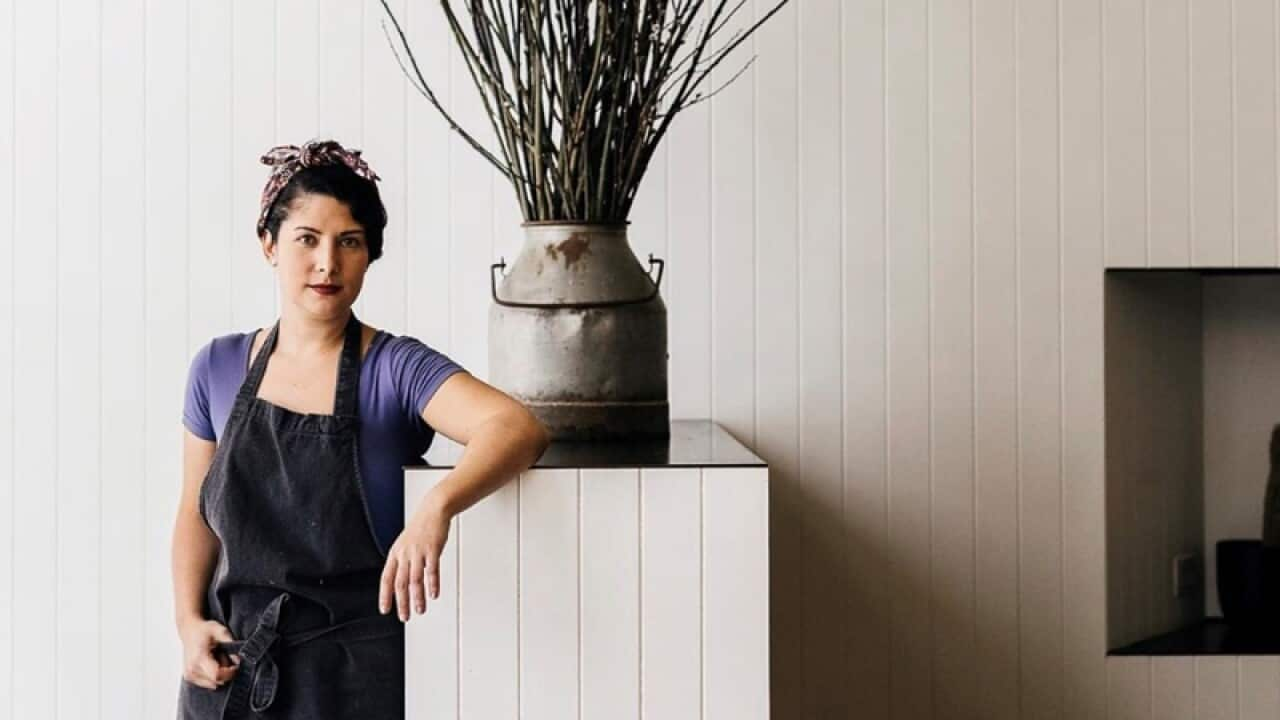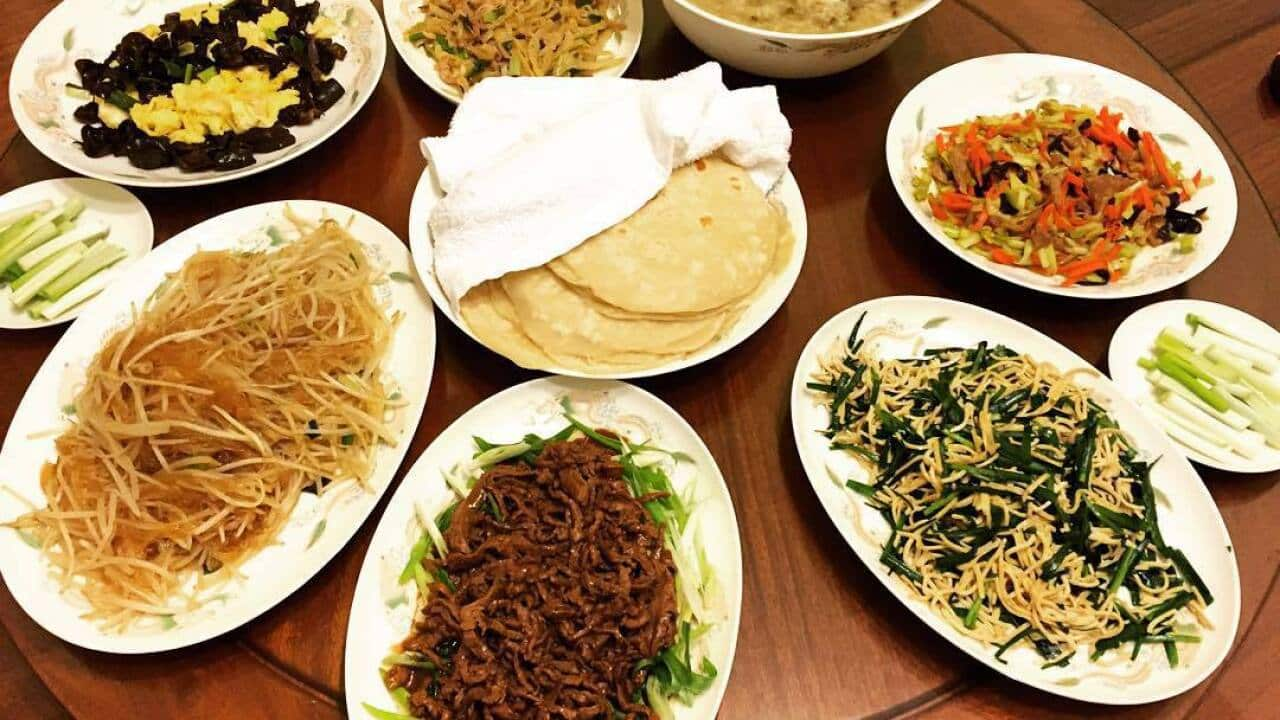or bao is a filled bun that you can find in China. They have many different fillings as well as preparations, and they can be meat or vegetarian. Baozi are also known as 'steamed buns' because they're most often cooked in a steamer.
Like dumplings, baozi are made from flour. The main difference between baozi and dumpling is their sizes. Baozi is much bigger than a dumpling, and baozi is fluffier and a bit sweeter than its relative.
A steamed baozi can be filled with ingredients that vary from meat to vegetables or a mixture of both. Most of the time, it contains one type of meat. We usually use pork or lamb or chicken at home. It also has one kind of vegetable, most commonly Chinese cabbage or mushrooms.
A good baozi is always steamed, soft and fluffy, just like a white pillow with fillings that melt in your mouth. Baozi are never dry. My grandma and mum make beautiful baozi. They are real artisan experience.
A good baozi is always steamed, soft and fluffy, just like a white pillow with fillings that melt in your mouth.
My grandma is creative when she makes baozi. Not only does she make normal pork, chicken and vegetable baozi, but she also loves to place small pieces of pork ribs (the ones with soft bones) and mushrooms in them. The cooked pork ribs are usually spongy and easy to bite.
Another speciality from my grandma is vegetarian baozi. She normally pan-fries tofu and egg with oyster sauce, then adds some greens. They taste meaty even though they're plant-based.
My family makes various sizes of baozi. Occasionally, my mum makes hand-sized baozi while my grandma makes mini baozi, just the size of a gold coin. Some are smaller than xiao long bao, the Shanghai dumpling. They often like to twist different layers and create swirling patterns before they seal the pleats together. It's always best to eat baozi when they're freshly cooked. As baozi cools down, the soft fluffy texture will change and become hard and chewy. I wouldn't recommend eating them cold. But it doesn't take long to reheat them. It's easy to pop in the microwave or steam them for 2-3 minutes.
It's always best to eat baozi when they're freshly cooked. As baozi cools down, the soft fluffy texture will change and become hard and chewy. I wouldn't recommend eating them cold. But it doesn't take long to reheat them. It's easy to pop in the microwave or steam them for 2-3 minutes.

Baozi: another type of dough ball in Chinese cuisine. Source: Angie Cui
Baozi also make a great breakfast on the go. My mum used to heat a few of them for us before we went to school and work in China. They were light and easy for us to carry on the bus, and that's why baozi is known as a takeaway food.
A good way to eat baozi is similar to how you eat dumplings. You can gently pick them up with the chopsticks and dip them in a sauce, which is often a mixture of vinegar and soy sauce. However, I love to use sesame oil instead of soy sauce, which makes baozi a lot sweeter.
Finally, make sure you take a small bite and pierce a hole in the bun before you do. This makes for a more enjoyable baozi experience. Drink and savour the broth first, then eat the entire baozi.
Pork baozi
Makes 12
Ingredients
Dough
- 300g plain flour
- 1 tbsp cornstarch
- 150 ml water
- 1 tbsp sweetened condensed milk or honey (optional)
- 1 tsp yeast
- 1 tbsp cooking oil
- ½ tsp salt
Method
- Mix flour, yeast, sugar and oil in a bowl. Pour in water or other liquids slowly while mixing.
- Combine and press with your hands until a smooth dough forms.
- Cover the bowl with a damp tea towel and leave to rise in a warm place until doubled in size. It will take between 1-2 hours depending on the room temperature.
Pork filling
- 150 g minced pork
- 1 cup shredded cabbage
- 1 tsp salt
- ¼ tsp five spice
- ½ tsp ground coriander
- ½ tsp ground black pepper
- 1 minced ginger
- 2 cloves minced garlic
- ½ cups spring onions
- 1 tsp light soy sauce
- 1 tsp oyster sauce
- 1 tbsp cooking oil
Method
- Put pork mince, soy sauce, oyster sauce, salt and five-spice in a mixing bowl.
- Briefly stir fry chopped Chinese cabbage and spring onions in oil until softened. Add to the pork along with chopped coriander, and mix all well.
- Divide the dough into 12 equal portions. Roll each piece into a disk-like wrapper.
- Place 1-2 tablespoons of the filling in the centre of the wrapper. Fix the starting point with the thumb of right hand and begin to fold the edge counterclockwise. Move the thumb slowly in the process. Repeat the steps to seal the baozi completely. You can twist different layers and create swirling patterns before they seal the pleats together.
- Place the raw baozi in the steamer basket. Leave 2-finger spaces between.
- Start cooking with cold water over a high heat. Turn the heat down to medium-low when the water starts boiling.
- Cook for 20 minutes and then they're ready to serve.
MORE ON CHINESE FOOD

12 Chinese dinners that make weeknights a cinch







